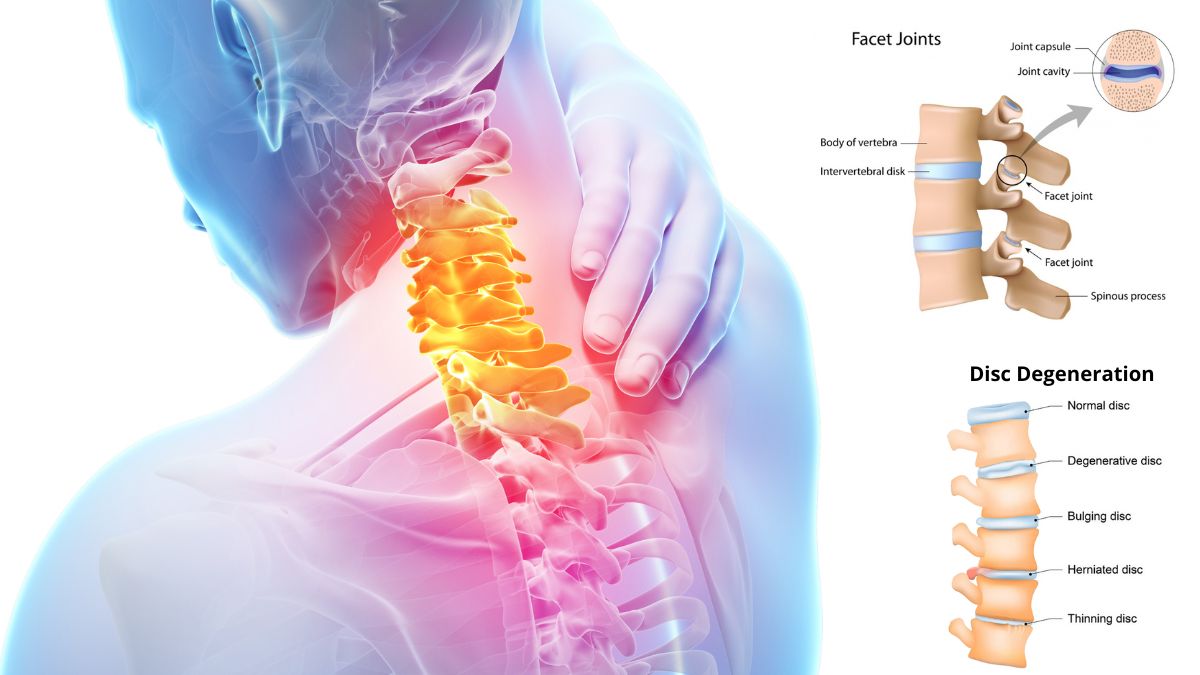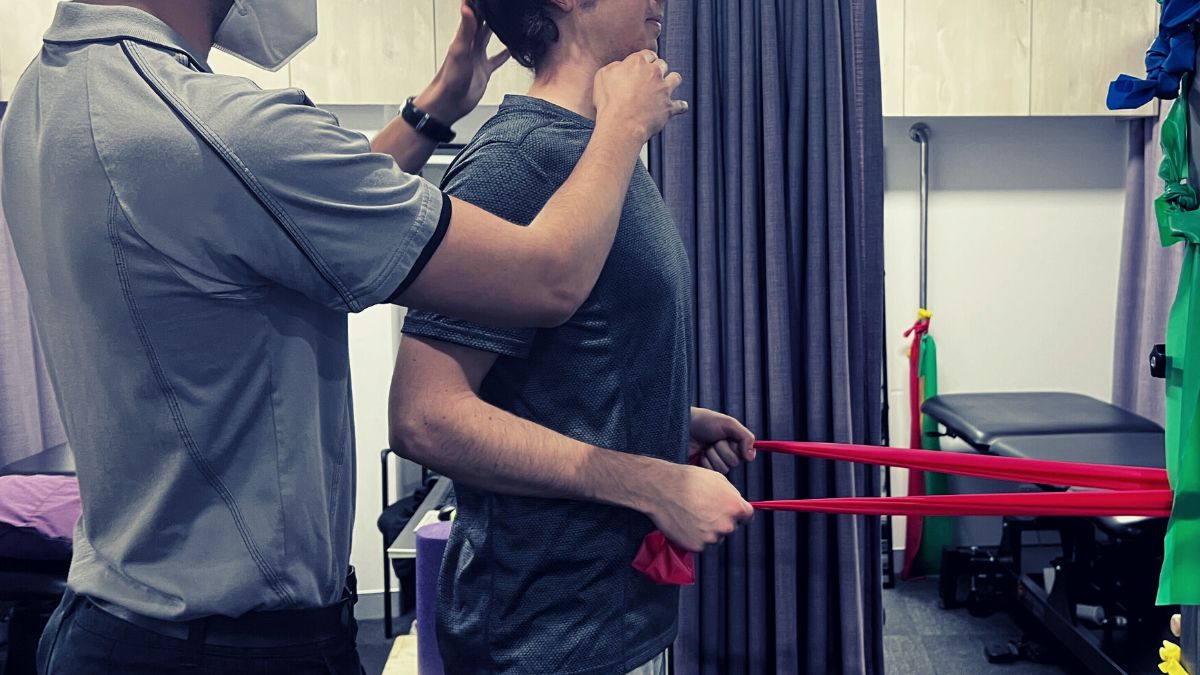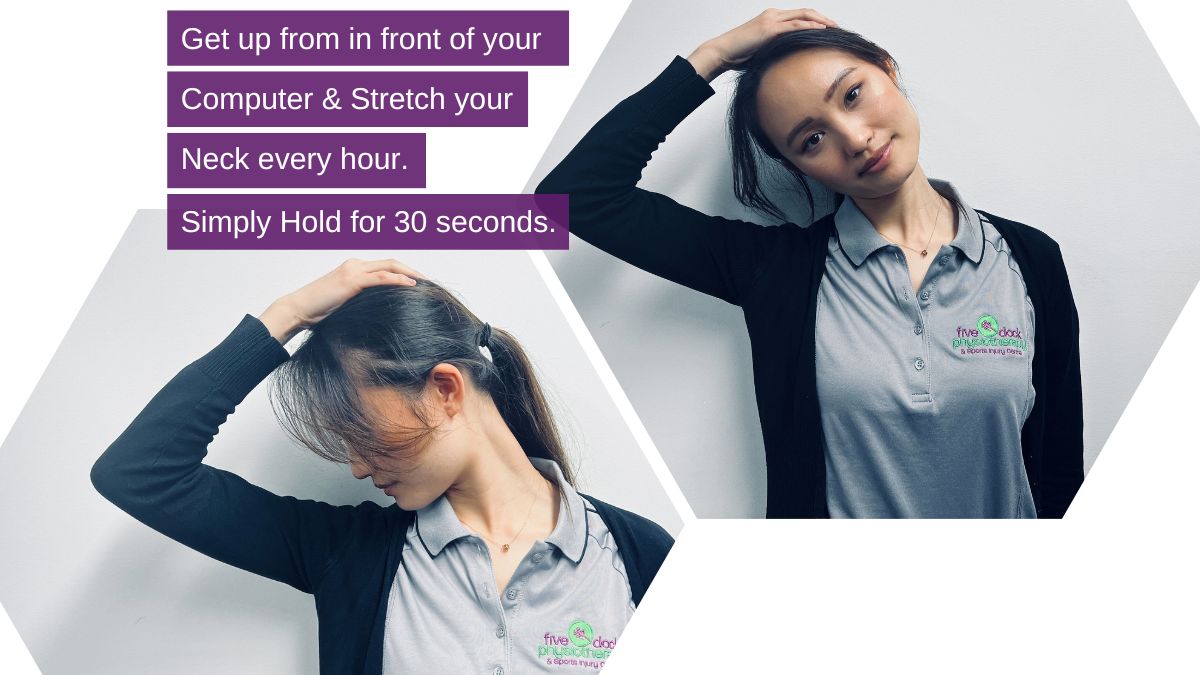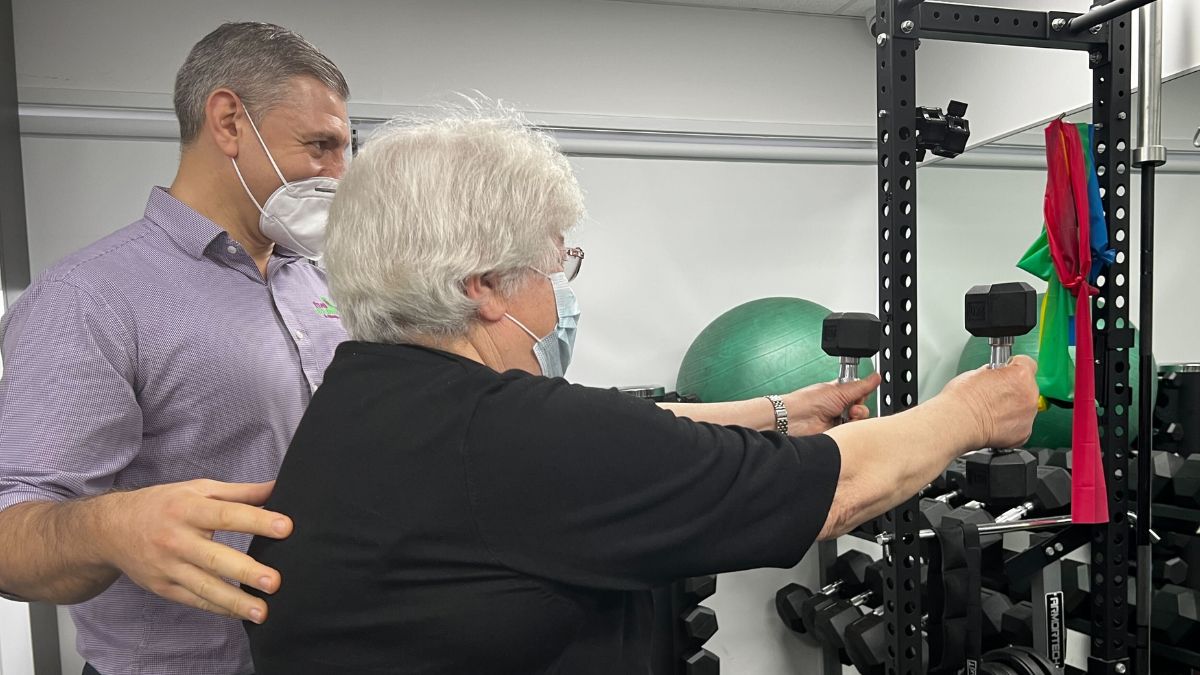70% of the population will experience neck pain at some point in their lives.
Neck pain is often as a result of facet joint irritation, muscular dysfunction, joint hypomobility but may also be caused by cervical joint degeneration, disc pathology or nerve impingement. Patients often present with stiffness, headaches, sharp pain, dull muscular aches, or the inability to fully move their neck. There are strong links to altered posture increasing stress and strain on the neck.
The estimated occurrence of neck pain in adults annually ranges between 10.4% to 21.3%, with a higher occurrence in office workers and interestingly it is more prominent in females.

Risk Factors
- Office worker
- Age >30 yrs old
- Prolonged forward head posture
- Sedentary lifestyle
- Female have 2 x greater occurance

Causes
Although some neck pain is due to an acute injury like a whiplash incident or a bad rugby tackle, there can be many causes of neck pain and it is often attributed to a combination of factors.
- Poor ergonomic and work station setup,
- Prolonged poor posture,
- Poor muscle activation patterns
- Lack of endurance of neck muscles
- Incorrect pillow/sleeping position,
- Incorrect joint biomechanics within the cervical spine
- Arthritic/degenerative changes
- Increased device use
Assessment of impaired muscle function is extremely important. Studies have shown that patients with neck pain demonstrate reduced levels of activity in the deep neck stabilising muscles, poor endurance and poor muscle strength
Approximately 70% of people who suffer frequent intermittent headaches report associated neck symptoms
Physio Assessment and Treatment
Physiotherapy examination of a patient presenting with neck pain or cervicogenic headache includes a thorough assessment of spinal alignment, posture and joint positioning. We assess restrictions in cervical spine range of motion, palpate for tenderness and hypomobility over the cervical segments and occipital region, identify postural changes that may be linked to symptoms, and assess for impaired muscle function in the neck, scapula and shoulder region. Understanding the impacts of further kinetic chain dysfunction is integral also to ensuring holistic treatment. Of note, things like poor gluteal activation are known to affect the contralateral (opposite side) neck and shoulder movement due to the muscle and fascial connections. The impacts of altered scapulo-humeral rhythm and shoulder dysfunction or rotator cuff weakness also have know impacts on the muscles and joints of the neck. Research by Neeraj et al (2019) found that having altered scapular alignment created a mechanical dysfunction in the cervical spine, which was common in people suffering from neck pain.

How is Neck pain treated?
A comprehensive treatment plan can be made following the initial assessment. Evidence supports the use of manual therapy in treatment for neck pain (Hall, T. et al. 2016), particularly in the early stages, which can be inclusive of joint mobilisations and soft tissue work to assist in releasing overworked muscles and promote movement of stiff hypomobile joints. It is important however, that manual therapy is used as an adjunct to exercise therapy. Jull, et al suggested in 2018 that the best treatment of neck pain is a combination of both exercise and manual therapy techniques.
Research by Meisingset et al (2016) showed that neck motion and motor control in the cervical spine improved primarily within 2 weeks of physiotherapy treatment. Faroq et al (2017) proved that cervical joint mobilisations had a significant effect on pain, disability, neck range of motion and neck muscle endurance in patients with neck pain. Finally, a systematic review conducted by Teo S. Y & Loy F. L. (2015) showed that a combination of manual therapy and exercise was more beneficial than manual therapy alone.

How does Physiotherapy help?
Physiotherapy has been shown to have a positive effect on neck pain when diagnosed correctly and treated early. Following a full examination of the cervical, thoracic and shoulder regions, and a screening of spinal posture, scapula control and the kinetic chain in general, a diagnosis can be made. Depending on the condition, the goals of the patient and the causation of symptoms, a combination of different manual therapy techniques, exercises and heat can help to achieve positive outcomes. Manual therapy including different forms of joint mobilisation and soft tissue techniques can help to reduce muscle guarding and improve normal joint mechanics within the cervical spine. Exercises will help to activate, strengthen and build endurance in the correct muscles while reinforcing good postural habits and improving biomechanics, stability and strength of the scapular and shoulder muscles. A stretching program will help reduce muscle tightness and maintain muscle length, whilst heat can also help to relax the overactive musculature surrounding the cervical spine/scapulae.
Physiotherapy also helps by identifying and addressing the barriers in everyday life that may lead to neck pain such as prolonged sitting, excessive device use or poor ergonomics/workstation set up, and our physio’s offer advice and education to mitigate these barriers and help prevent recurrences of neck issues in the future.


